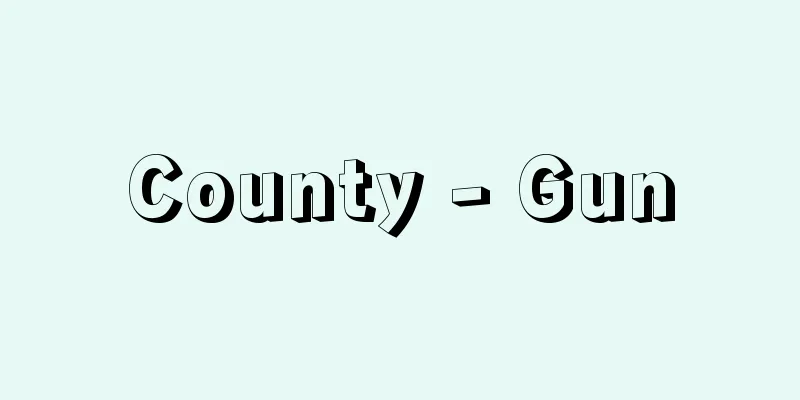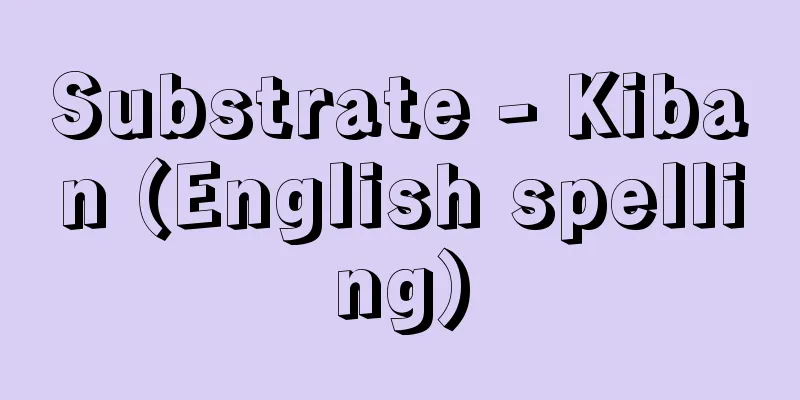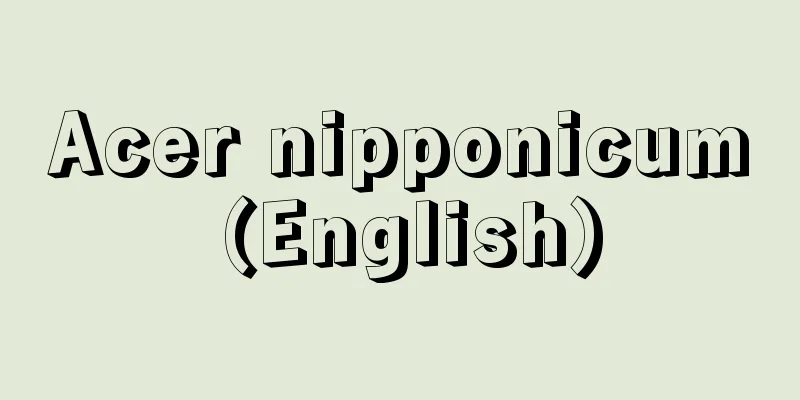County - Gun

|
An administrative division under Kuni that includes towns, villages, towns, and villages. In ancient times, it was also read as "koori." The Koori system had been in effect since 649, but it is thought that it was reorganized into a Gun system with the implementation of the Taiho Code in 701. According to the Code, a village consisting of 50 households (which was renamed Go in 715 and the Gori system was implemented) was the component unit, and 20 ri or less and 16 ri or more were classified as Taigun, 12 ri or more as Jogun, 8 ri or more as Chugun, 4 ri or more as Shimogun, and 2 ri or more as Shogun. A Gunga (gun office) and Gunji (gun governor) were established for each Gun. The total number of Guns in the Nara period was 555 (Ritsyo Zanpen), and 592 in the Wamyousho. From the mid-Heian period onwards, the Ritsuryo-style county system gradually collapsed, and its function as an administrative division declined, especially with the development of manors. According to the Shugaisho, the number of counties in the early Middle Ages was 604, but in the late Middle Ages, the number was fluid, with private counties being established, and the boundaries of counties were often changed. The readings of the county names are recorded in the Wamyōshō and Shugaisho, but are not necessarily consistent. In 1591, Toyotomi Hideyoshi ordered the creation of Gozenchō (land survey books) and Kuniezu (country maps) based on the province and county, and established a system of rule similar to that of the province and county system, which continued into the Edo period. According to the Tenpo Gochō, the number of counties was 631. The old counties were abolished in 1872 with the introduction of the Oku and Koku system, but they were reinstated as administrative divisions by the Law on the Organization of County, Ward, Town and Villages promulgated in 1878, and county offices and county governors were established. With the promulgation of the Gun System in 1890, county assemblies were established and the districts became local governments. In 1923, the Gun System Abolition Law was enacted, and the districts became administrative districts again. In 1926, the district governor and other officials and the district offices were abolished, and the districts have remained as mere geographical names to this day. In addition, due to the so-called "Great Heisei Mergers," the number of districts, which was 558 at the end of March 1999, decreased to 406 at the end of March 2006. → Related topics Prefecture|Comment|Taika Reform|Nasu Kuni no Miyatsuko Monument Source : Heibonsha Encyclopedia About MyPedia Information |
|
国の下にあって郷(ごう)・里(り)・町・村などを包括した行政区画。古くは〈こおり〉とも読む。649年から評(こおり)制が施行されていたが,701年の大宝(たいほう)律令施行により郡制に改編され成立したと考えられる。令の規定では50戸からなる里(715年に郷に改称し,郷里制施行)を構成単位とし,20里以下16里以上を大郡(たいぐん),12里以上を上郡(じょうぐん),8里以上を中郡(ちゅうぐん),4里以上を下郡(げぐん),2里以上を小郡(しょうぐん)とし,郡ごとに郡衙(ぐんが)を設け郡司(ぐんじ)を置いた。郡の総数は奈良時代で555(律書残篇(りっしょざんぺん)),《和名抄(わみょうしょう)》では592。平安時代中期以降律令制的な郡制はしだいに崩壊し,とくに荘園の発達により行政区画としての機能は衰退した。中世前期の郡数は《拾芥抄(しゅうがいしょう)》によると604とされるが,中世後期には私郡が成立するなど流動的で,郡域の変更もしばしば行われた。なお郡名の訓は《和名抄》や《拾芥抄》に記されているが,必ずしも一定ではない。1591年豊臣秀吉は国郡を単位に御前帳(ごぜんちょう)(検地帳)・国絵図(くにえず)の作成を命じて国郡制的な支配を行い,江戸時代もこれを継承した。天保郷帳(てんぽうごうちょう)によると郡数631。1872年の大区・小区制により旧郡は否定されたが,1878年公布の郡区町村編制法によって行政区画として復活,郡役所・郡長が置かれた。1890年の郡制公布によって郡会が設置され,地方自治体となった。1923年郡制廃止法が施行され,郡は再び行政区画となり,1926年には郡長以下の官吏(かんり)および郡役所も廃され,たんなる地理的名称として現在に至っている。なお,いわゆる〈平成の大合併〉に伴い,1999年3月末に558あった郡は2006年3月末には406に減少した。 →関連項目県|評|大化改新|那須国造碑 出典 株式会社平凡社百科事典マイペディアについて 情報 |
<<: Group - Gun (English spelling)
Recommend
Guise, H.de (English spelling) GuiseHde
...A powerful family that branched off from the p...
Batillaria zonalis
…[Tadashige Nabe]. . … *Some of the terminology t...
Uematsu Arinobu
Year of death: 20th June 1910 (17th July 1813) Yea...
Sand mark
...If the cause is the mold, improve the moisture...
Indian long pepper - Indian long pepper
...The main production area is India, which produ...
Aphelion
All planets and most comets in the solar system or...
Rhododendron serpyllifolium (English name) Rhododendronserpyllifolium
…[Yoshiharu Iijima]. … *Some of the terminology t...
Tong County - Tōng xiàn
A satellite city in the eastern part of Beijing, C...
Kitasamycin
Also called leucomycin. A 16-membered macrolide a...
Circadian rhythm
This refers to the changes observed in the variou...
Methane - metan (English spelling) methane
It has the smallest carbon number of any alkane, ...
Agostino Depretis
1813‐87 Italian politician. Born into a landowning...
Mojuro Sugimoto
Years of birth: unknown. An Edo townsman who worke...
Crozier, M.
...In other words, the emergence of pathologies s...
Airbus - Airbus (English spelling)
Originally a wide-body, large jet transport aircr...









